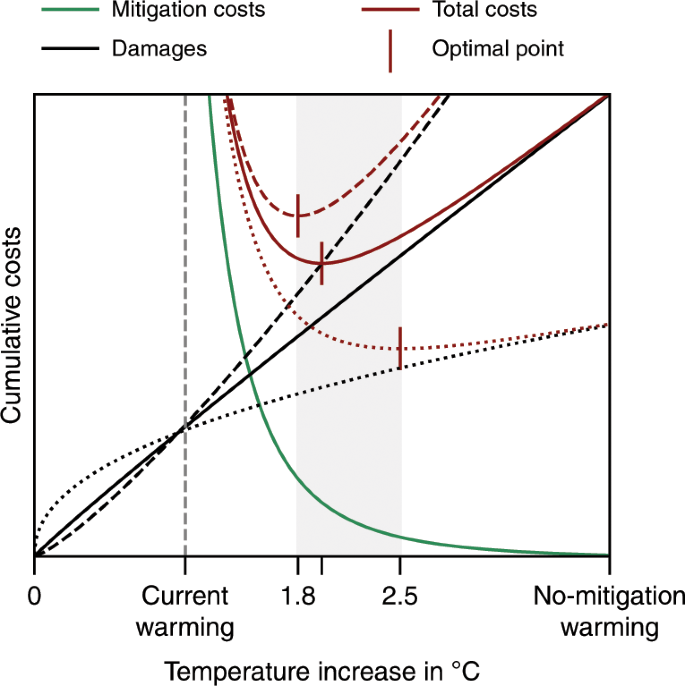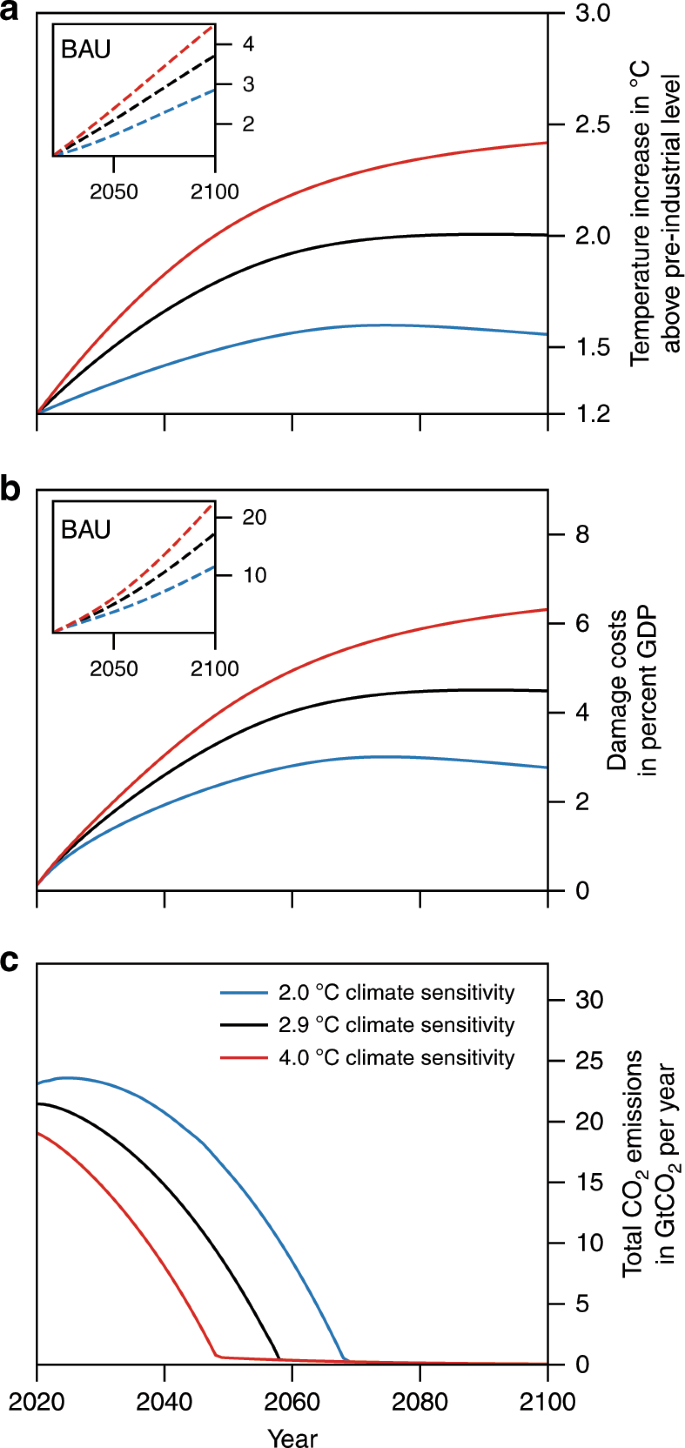Supporting Rational Evaluation Over Preconception by Facilitating Comprehensive Quantification
Tuesday, February 4, 2020
The $64 Billion Massachusetts Vehicle Economy
This summary is not available. Please
click here to view the post.
Labels:
Air,
Climate Change GHGs,
Costs,
Massachusetts,
Models,
Transportation
Location:
Massachusetts, USA
Paris Climate Agreement passes the cost-benefit test
Abstract:
The Paris Climate Agreement aims to keep temperature rise well below 2 °C. This implies mitigation costs as well as avoided climate damages. Here we show that independent of the normative assumptions of inequality aversion and time preferences, the agreement constitutes the economically optimal policy pathway for the century. To this end we consistently incorporate a damage-cost curve reproducing the observed relation between temperature and economic growth into the integrated assessment model DICE [ Dynamic Integrated Climate-Economy model]. We thus provide an inter-temporally optimizing cost-benefit analysis of this century’s climate problem. We account for uncertainties regarding the damage curve, climate sensitivity, socioeconomic future, and mitigation costs. The resulting optimal temperature is robust as can be understood from the generic temperature-dependence of the mitigation costs and the level of damages inferred from the observed temperature-growth relationship. Our results show that the politically motivated Paris Climate Agreement also represents the economically favourable pathway, if carried out properly.
...
[The authors] find that the 2 °C target represents the cost-benefit optimal temperature for the base calibration (Fig. 2a). This calibration involves the best estimate8 of the temperature–economic growth relation in the past and the original ECS [equilibrium climate sensitivity] value in DICE-2013 of 2.9 °C, which is at the centre of estimates for several decades. Higher ECS values shift the level of target warming for which the mitigation-cost curve diverges to infinity to higher values (Fig. 1), i.e. they incur substantially higher mitigation costs. For ECS of 4 °C, for instance, the 2 °C target becomes too costly. Yet, with an optimal target warming of 2.4 °C the deviation from this target is not large. For smaller ECS values, e.g. of 2 °C, limiting warming further to well below 2 °C is economically optimal. Regardless of the exact ECS, the optimal mitigation efforts promise a significant damage reduction compared to the BAU [business-as-usual] scenario (~14% for ECS of 4 °C, ~10% for ECS of 2.9 °C, and ~8% for ECS of 2 °C). These efforts are, as also claimed by the Paris Agreement, ambitious (Article 3)1 and involve very stringent measures from the outset (Fig. 2c).
Fig. 1: Illustration of universality of the cost-benefit climate analysis.
 |
Cumulative mitigation costs (green curve) and climate damages (black curve) as a function of Earthʼs warming level give the total climate costs (red curve). Mitigation costs diverge for present-day warming and converge to zero for unmitigated warming. The damages are zero for zero warming and increase with temperature. The characteristic steepness of the mitigation curve implies that beyond a certain damage level the economically optimal temperature (which minimizes the total costs) becomes insensitive to a further increase in damages. For example, increasing (black dashed) or decreasing (black dotted) the damage level by half of the initial damage level does not change the economically optimal warming level significantly (grey area).
|
Fig. 2: Temperature increase, damage costs, and carbon emissions under cost-benefit optimal policy for three different climate sensitivities.
 |
| The black curves are associated with the original calibration of the climate sensitivity of 2.9°C; the blue curves with a 2°C climate sensitivity and the red curve with a 4°C climate sensitivity. The inset figures allow comparing the economically optimal temperature development and damage costs with their corresponding values in the BAU scenario. |
by Nicole Glanemann, Sven N. Willner & Anders Levermann
Nature Communications https://www.nature.com/ncomms/
Volume 11, Article Number: 110; (2020); Open Access; Published: 27 January 2020
Subscribe to:
Posts (Atom)